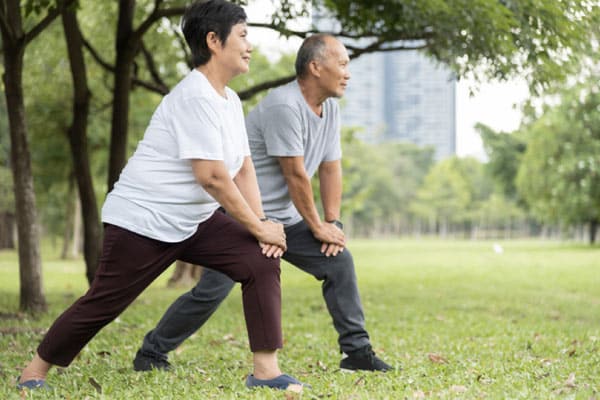As family caregivers, we often find ourselves pulled in multiple directions, balancing the needs of our loved ones with our responsibilities and obligations. It's a labor of love, but it can also be incredibly physically and emotionally demanding. However, taking care of yourself is just as important as caring for the person you love. That's why incorporating quick breaks into your daily routine reduces stress and maintains your well-being.
The experts at CareTime, American, Advocate, and Whitsyms In-Home Care share ten simple and effective ways family caregivers can take a quick break right now:
- Take a Breath: Find a quiet moment to focus on breathing. Close your eyes and take slow, deep breaths, inhaling calmness and exhaling tension. Even a few minutes of deep breathing can help clear your mind and reduce stress.
- Stretch It Out: Spend a few minutes stretching your body. Gentle stretches can help relieve muscle tension and improve circulation, leaving you feeling more relaxed and rejuvenated.
- Enjoy a Cup of Tea: Brew yourself a soothing cup of tea and take a moment to savor its warmth and flavor. Tea can have calming effects on both the mind and body, providing a moment of tranquility during a busy day.
- Listen to Music: Put on your favorite playlist or a calming instrumental track and let the music wash over you. Music can uplift your mood and soothe your soul, providing a much-needed break from the demands of caregiving.
- Connect With Nature: Step outside for a breath of fresh air and immerse yourself in nature, even if it's just for a few minutes. Take a short walk around the block, sit in a nearby park, or gaze at the sky and feel the sun on your face. Nature has a healing presence that can help restore your sense of peace and perspective.
- Practice Gratitude: Take a moment to reflect on things for which you're grateful. Whether it's the love of your family, friends' support, or nature's beauty, cultivating a sense of gratitude can shift your focus from stress to appreciation.
- Laugh Out Loud: Watch a funny video, read a humorous story, or reminisce about happy memories with someone you love. Laughter is the best medicine; it can instantly lift your spirits and lighten your mood.
- Write in a Journal: Grab a pen and paper and jot down your thoughts and feelings. Writing can be a therapeutic outlet for processing emotions and clarifying challenging situations. It's also a great way to document your caregiving journey and track your progress.
- Take a Power Nap: If you're feeling exhausted, permit yourself to take a short nap. Even just 20-30 minutes of rest can recharge your batteries and improve your alertness and cognitive function.
- Reach Out for Support: Don't hesitate to lean on your support network when you need a break. Whether it's family, friends, or professional caregivers, people are willing to help lighten your load.
Respite care services, in particular, offer temporary relief for family caregivers by providing trained professionals to step in and assist with caregiving duties. Whether you need a few hours to run errands, a weekend getaway to recharge, or a more extended break to attend to your health needs, respite care can give you the time and space you need to rest and rejuvenate.
Remember, taking care of yourself isn't selfish—it's essential for your well-being and that of the person you love. So don't forget to prioritize your care and make time for these quick breaks throughout your day.
A trusted referred care provider from CareTime, American, Advocate, or Whitsyms In-Home Care is the perfect solution to allow you to take time away for yourself to continue providing the best care for the person you love. Contact us to learn more about how respite care services can help you achieve the healthy life balance you need. Click the link below to the location nearest you:
- American In-Home Care – Serving North, Central, and West Coast of Florida
- Advocate In-Home Care – Serving Southeast and Southwest Florida
- Whitsyms In-Home Care – Serving Southeast and Southwest Florida
- CareTime – Serving Ocala, Florida and the Surrounding Areas
State of Florida License and Registration Numbers: 30211518, 30211651, 30211295, 30211390, 30210978, 30211293, 30211382, 30211504, 30211733, 30211535, 30211531, 30211710, 30211709, 30211045, 5661











